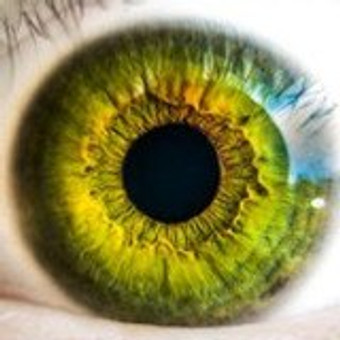They are medical devices designed to correct vision and can also be used for therapeutic or cosmetic reasons.
Contacts have the same function as eyeglasses – to focus and refract light properly onto the retina and thus make objects appear clearly.
However, contacts are much more than small eyeglass lenses that fit onto your eyes.
How corrective contact lenses work?
Corrective contact lenses are used to achieve clear vision. Various types of lenses work differently depending on vision conditions such as nearsightedness, farsightedness, and astigmatism to name a few. All of these are refractive conditions, which means that they are problems relating to how the light is focused as it enters the eye. In ideal conditions, as light enters the eye it should be perfectly focused onto the inside lining of the eye which detects the light, better known as the retina. The brain would then see the objects clearly and the person would have a ‘perfect vision’.
Nearsightedness is a refractive defect of the eye lens because light rays focus too early within your eye – meaning that the image is formed in front of the retina and not directly on it. All this means is that nearsighted people see closer, or ‘nearer’, and items that are further away get blurry. Contact lenses correct nearsightedness by diverging light rays, and by doing so, reduce the eye’s focusing power and move the image backward, onto the retina.
Farsightedness is also a defect of vision because the eyes don’t have adequate focusing power. This occurs because the eyeball is too short, and light rays fail to form an image by the time they reach the retina thus making closer objects appear to be blurred. Contact lenses correct this defect by converging light rays, which increases the focusing power of the eye.
Powers of both contact lenses and glasses are expressed in diopters (D). Nearsightedness is corrected with the lens powers that start with a minus sign (-), and those that correct farsightedness start with a plus sign (+).
Astigmatism is characterized by an irregularly shaped cornea, which causes the images to focus on two different points in the eye. Because of this, spherical lenses are not used in patients with astigmatism. The most frequently used lenses for this defect are designated as astigmatism, or toric, lenses. They have a specific design that creates different refractive, or focusing, powers on the vertical and horizontal orientations. The refractive strength increases or decreases gradually as you move around the lens.
What are advantages of contact lenses over glasses?

Some of the advantages that contact lenses have over glasses are size and thickness. Contacts are much smaller and thinner than eyeglass lenses and they stick to the tear film layer on the surface of the eye.
Contact lenses rest directly on the surface of the eye and because of their proximity to the eye, the central part of the contact lenses that contains the corrective power, also known as the optic zone of the lenses, is much smaller than the optic zone of the eyeglass lenses which is the entire lens surface. The optic zone of contact lenses is only a part of the lens, which is surrounded by peripheral fitting curves that do not affect vision in any way.
As mentioned above contact lenses rest directly on the surface of the eye or cornea, because of this their optic zone needs to be approximately the same size as the pupil in low-light conditions which is about 9 millimeters. In contrast, eyeglass lenses need to be greater than 46 millimeters in diameter to be able to provide an adequate field of view.
The thickness of the eyeglass lenses is much greater compared to that of a contact lens. Eyeglass lenses need to be thicker in order to keep from breaking upon impact.
Since contacts are worn right on the eye they give a far more natural vision field and there is no weight or discomfort such as it is with frames slipping down your nose. Contact lenses are also not affected by weather and don’t fog up or collect precipitation thus blurring your vision.
What are therapeutic contact lenses?

Therapeutic contact lenses also known as ‘bandage lenses’ are designed to protect and aid the healing of a sick eye.
They are extensively used to protect the cornea, relieve pain, and enhance the healing of the eye surface.
What is important to be known is that these kinds of lenses are only used to relieve or control pain, they are not usually utilized for improving vision.
Therapeutic lenses can be especially valuable when treating post-surgical conditions of the cornea and ocular surface.
Cosmetic and decorative lenses
Cosmetic or decorative contact lenses, also known by many different names, are mainly used to change the look of your eyes. Despite that, they are, in fact, medical devices –a prescription for them is always needed.
Wearing these kinds of lenses is a risk because they can cause serious damage to the eyes if obtained without prescription and not used correctly.
How contact lenses for sports work?

Sports performance can be enhanced by contact lenses in many different ways. For example, they can provide a wider field of view than
glasses. Apart from being far more practical than glasses, contact lenses have several advantages over glasses.
Eyeglasses generally have small, mostly flat lenses and small frames which significantly limits the peripheral vision (peripheral vision is essential for most sports). This is not the case with contacts since they fit onto the eyes and move naturally with them. Contact lenses provide an unobstructed, wide field of view – more of one’s surroundings can be seen allowing a faster reaction to objects or players on the field. This is not the case with the glasses because their frame can block or distort vision. Unlike glasses, contacts don’t fog up or get splattered, they remain clear despite environment or weather conditions, such as rain. Also, contact lenses can’t break and cause an eye injury after a hard hit, which is what happens with eyeglasses. With contacts, there is no need to worry whether they’ll slide down your nose or fall off.
How "Daily Disposable" and " Disposable" contacts work?
Lenses designed for a single-use wear that are removed and thrown out at the end of each day, and a fresh pair of lenses is applied to the eyes the next day are known as daily disposable lenses. However, there is one thing to keep in mind, ‘daily disposable’ and ‘disposable’ lenses are two different things.
Disposable lenses are worn daily and thrown out every one to two weeks, month, etc., whereas daily disposable ones, as mentioned above, are removed and discarded daily.
Replacing lenses often is a healthy thing to do, with any type of lens. The only difference between conventional, daily disposable, and disposable lenses is in the duration of their use. As mentioned above disposable lenses can be used up to one month (depending on wear schedule), daily disposable only last one day (daily wear), and conventional lenses can last up to a year.
 Save yourself from getting into rush hours and buy your contacts online.
Save yourself from getting into rush hours and buy your contacts online.








